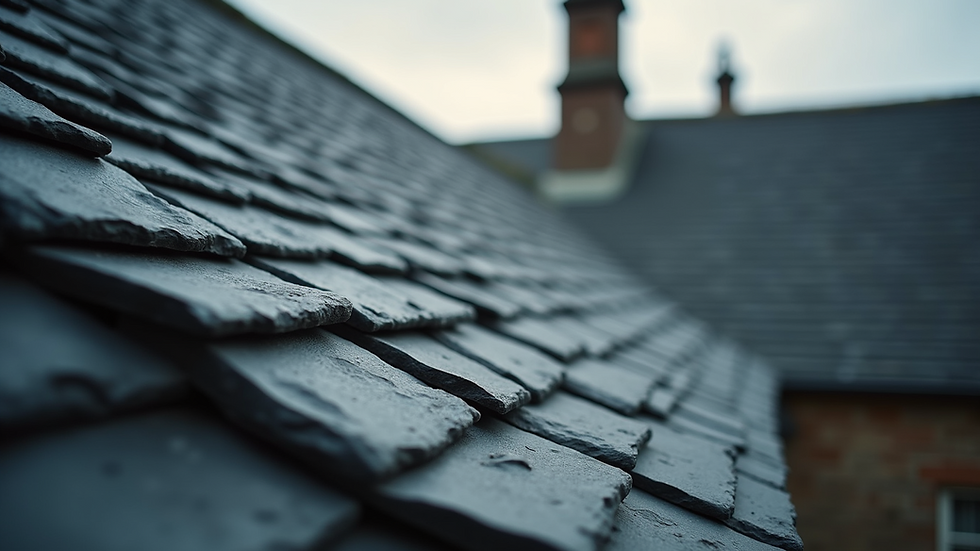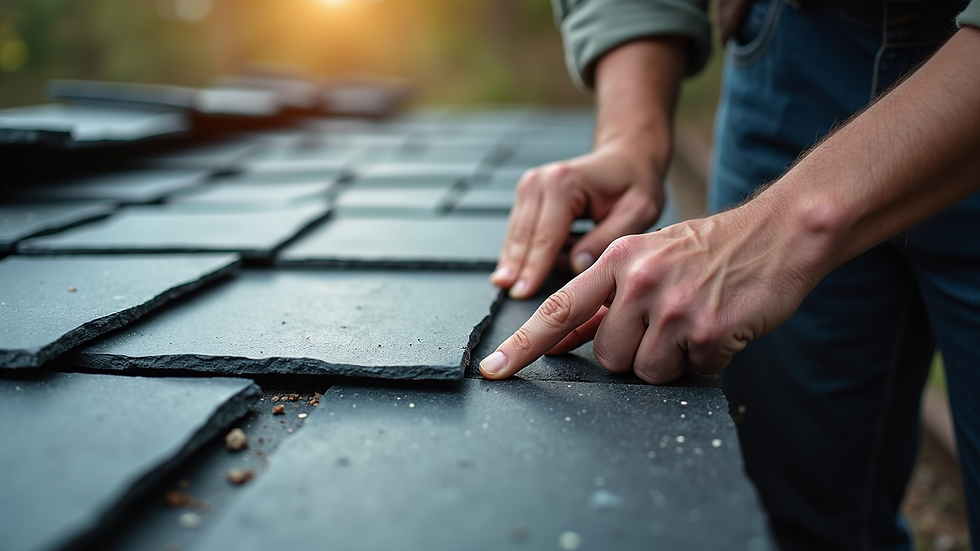The Importance of Restoring Historic Roofs
- Alex Morgan

- Aug 14
- 4 min read
Updated: Oct 20
Historic roofs are more than just protective coverings for old buildings. They are vital pieces of architectural heritage that tell stories of the past. Preserving these roofs helps maintain the character and charm of historic structures while ensuring their longevity. Restoring historic roofs requires careful attention to detail, specialized skills, and a deep respect for the original materials and craftsmanship.
Why Historic Roofs Matter
Historic roofs contribute significantly to the identity of a building and the surrounding community. They often feature unique materials such as slate, clay tiles, or wooden shingles that are no longer commonly used. These materials not only add aesthetic value but also demonstrate the construction techniques of their time.
Preserving a historic roof helps:
Maintain the architectural integrity of the building
Protect the structure from weather damage
Enhance property value and curb appeal
Support cultural and historical education
For example, a slate roof on a Victorian-era home showcases the intricate craftsmanship and durability that modern materials may lack. By restoring such roofs, we keep history alive and functional.

Challenges in Restoring a Historic Roof
Restoring historic roofs is not as simple as replacing old shingles with new ones. It involves several challenges that require expertise and patience:
Material sourcing: Finding authentic or compatible materials can be difficult. For instance, matching the color and texture of original slate tiles may require sourcing from specialized quarries.
Structural concerns: Older roofs may have weakened supports or hidden damage that must be addressed before restoration.
Preservation standards: Many historic buildings are protected by regulations that dictate how restoration should be done to maintain authenticity.
Cost considerations: Restoration can be more expensive than replacement due to the need for skilled labor and rare materials.
Despite these challenges, the benefits of restoring a historic roof far outweigh the difficulties. Proper planning and working with experienced professionals can ensure a successful project.

Techniques and Best Practices for Historic Roof Restoration
When undertaking a historic roof restoration, it is essential to follow best practices to preserve the roof’s character and functionality:
Assessment and Documentation: Begin with a thorough inspection to identify damage, material types, and construction methods. Document the roof’s current condition with photos and notes.
Material Matching: Use original materials whenever possible. If replacements are necessary, select materials that closely match the originals in appearance and durability.
Skilled Craftsmanship: Employ roofers experienced in historic restoration. They understand traditional techniques such as hand-cutting slate or using lime-based mortar.
Minimal Intervention: Repair rather than replace whenever feasible. This approach retains as much of the original fabric as possible.
Proper Ventilation and Drainage: Ensure the roof has adequate ventilation and drainage to prevent future damage.
Regular Maintenance: After restoration, schedule routine inspections and maintenance to prolong the roof’s life.
Following these steps helps maintain the roof’s historical value while providing modern protection.

The Environmental and Economic Benefits of Historic Roof Restoration
Restoring historic roofs is not only about preserving history but also about sustainability and economic sense:
Environmental Impact: Reusing existing materials reduces waste and the demand for new resources. Historic materials like slate and clay tiles are durable and have a lower environmental footprint compared to synthetic alternatives.
Energy Efficiency: Properly restored roofs can improve insulation and reduce energy costs. Historic roofs often have thick underlayments and natural ventilation that help regulate indoor temperatures.
Economic Value: Restored historic buildings often attract tourism and increase property values. They contribute to the local economy by supporting skilled trades and heritage industries.
Investing in historic roof restoration is a smart choice that benefits both the environment and the community.
How to Choose the Right Professionals for Your Historic Roof Project
Selecting the right team is crucial for a successful restoration. Here are some tips to find qualified professionals:
Experience: Look for contractors with a proven track record in historic roof restoration projects.
References: Ask for references and visit completed projects if possible.
Certifications: Check for certifications from preservation organizations or roofing associations.
Detailed Estimates: Obtain written estimates that outline the scope of work, materials, and timeline.
Communication: Choose a team that communicates clearly and respects your goals for the project.
Working with experts ensures that your historic roof is restored with care and precision.
For those interested in professional services, historic roof restoration specialists can provide tailored solutions that honor the building’s heritage while enhancing its durability.
Preserving History One Roof at a Time
Restoring historic roofs is a meaningful way to protect architectural heritage and maintain the beauty of our built environment. These roofs are tangible links to the past, showcasing craftsmanship and materials that modern construction often overlooks. By investing in proper restoration, we ensure that future generations can appreciate and learn from these historic treasures.
Whether it is a slate roof on a colonial home or a tile roof on a historic church, each restoration project is a step toward preserving history. With the right knowledge, materials, and professionals, historic roofs can continue to shelter and inspire for many years to come.






Comments